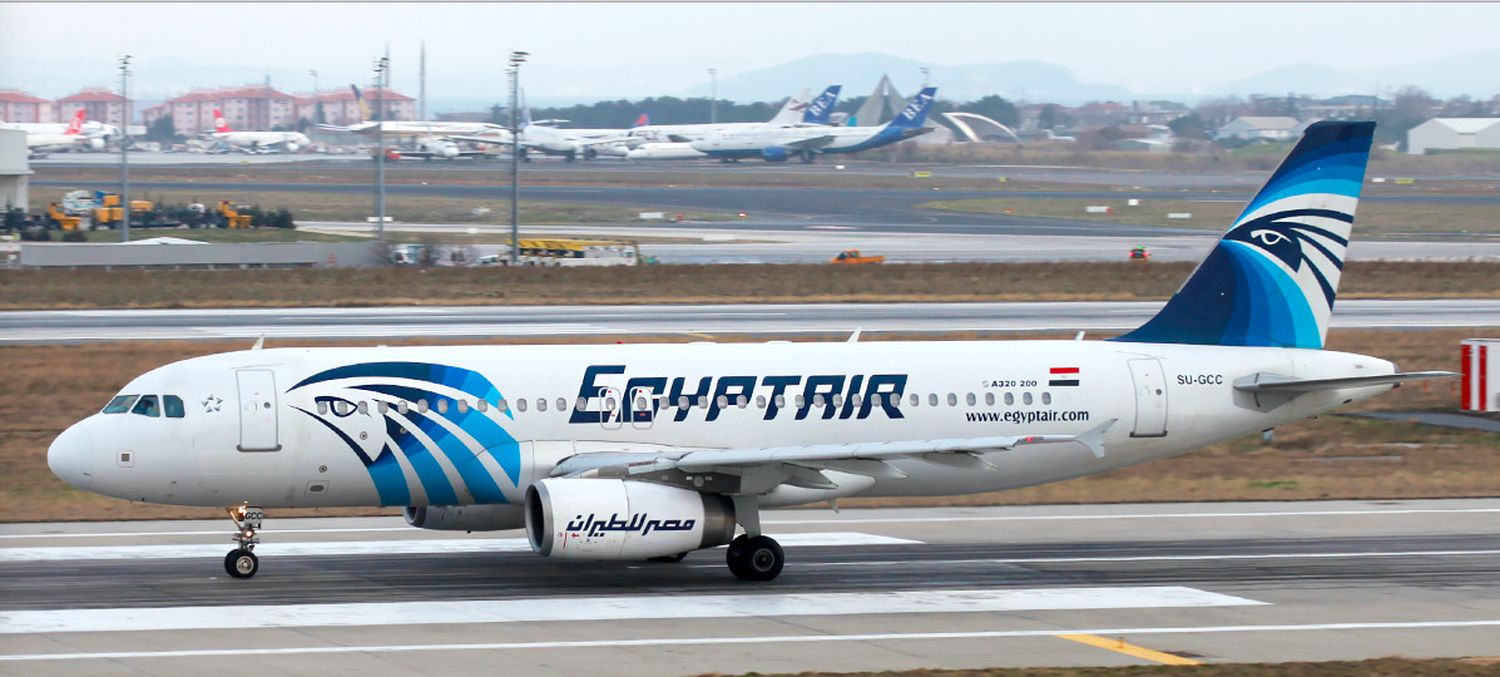The Airbus A320 covering EgyptAir Flight 804 on May 19, 2016, disappeared from radar screens over the Mediterranean about two and a half hours after takeoff. The plane had departed from Charles de Gaulle Airport in Paris. It never reached its destination, Cairo International Airport.
The wreckage of the aircraft, which was carrying sixty-six people, was located a month later, at a depth of almost four thousand meters. The voice and flight data recorders, popularly known as black boxes, were also recovered there.
According to confidential information obtained by Corriere della Sera, everything seems to indicate that the accident was caused by the leakage of oxygen from the co-pilot’s mask.
It should be noted that the Egyptian authorities have never published any preliminary or final report on the investigation of the accident. Annex 13 of ICAO standards places the responsibility for investigating and publishing findings on accidents involving its aircraft in the country where the operator is registered.
Route and duration
Flight 804 closed at 23:09 hours on 18 May 2016 and took off from Paris Charles de Gaulle airport at 23:21 hours (UTC). At 00:11 hours, the aircraft entered Italian airspace, flew over the Veneto region, skirted the Balkans, and continued its southbound bow.
At 0234 hours, after leaving Greek airspace, the aircraft disappeared from radar. Prior to this, it made two unscheduled turns, first to the left and then to the right. It never declared an emergency.
Shortly before going down, the aircraft sent seven automatic ACARS dispatches in about two seconds: these indicated problems with the anti-icing sensors, the cockpit windows, smoke in the forward lavatory and in the avionics compartment (located under the cockpit).
Suspicious maintenance
A 2019 French investigation report stated that the aircraft was not airworthy. On at least four flights prior to the accident, crews «failed to report» the aircraft’s defects. On the eve of the flight, the ECAM system issued about twenty alerts. The pilots reset the systems and cleared the messages instead of reporting them to maintenance.
A problematic oxygen mask
On May 16, 2016, three days before the fateful flight, EgyptAir maintenance personnel replaced the co-pilot’s oxygen mask. The reasons are not known, as neither the airline nor the country has cooperated with the investigation.
What is known is this: when stowing the new mask, the replacement attendant left the slider that manages airflow on «emergency.» The Airbus maintenance manual states verbatim that «oxygen leakage could occur» if the slider is in that position.
Related content: EgyptAir puts all its Embraer E170s up for sale
In conducting analyses on the cockpit audio captured by the voice recorder (CVR), French experts isolated «crackling noises» coming from the microphone built into the co-pilot’s oxygen mask, consistent with a loss of oxygen. The mask was stowed in its compartment, to the right of the first officer, and was never used during the flight.
Not mandatory but good practice
«When we enter the cockpit, one of the many checks we perform is to verify the oxygen flow of the masks,» explains Daniele Veronelli, A320 captain. «The airflow is tested by pressing a button. If you make the first flight of the day of that aircraft, this check is mandatory,» the pilot points out.
«On the other hand, if you relieve another crew, it is not necessary. Even so, it is always better to carry it out as it only takes a few seconds,» Veronelli added. The flight was the aircraft’s fifth that day: it first flew from Asmara International Airport to Cairo. From there it flew back and forth to Tunis International Airport. The last flight before the accident was flight 803, which linked Cairo and Paris.
About the operation of the oxygen system on the A320, the pilot explains: «if the selector is in the emergency position it releases air at a higher pressure in order to expel smoke» that could enter the mask in case of fire.
Tired and smoking at 37,000 ft.
All it took for the oxygen coming out of the mask to ignite was for one of the crew members – it is not known which one – to light a cigarette. EgyptAir had not yet banned in-flight smoking at the time of the accident, and the airline’s pilots used to engage in this practice a lot: two months before the final flight, the plane’s cockpit ashtrays had been replaced for «overuse.» The cigarette that sealed the fate of flight 804 was the eleventh consumed by the crew during the almost three hours they were in command of the plane.
In the document to which Corriere had access, the commander and the first officer are also heard to show signs of fatigue. While the plane was flying over Greece, yawns are heard, and the crew members express that they feel tired.
The documents analyzed by the French investigation, however, «indicate that the crew’s rest times were respected».
Egyptian position
The Egyptian government has not budged and has maintained its position since 2016: the EgyptAir flight 804 was brought down by a terrorist attack. On May 24, just days after the crash, a forensic expert from the Egyptian investigation team said that everything indicated an explosion on board. This position was reinforced by the finding of «traces of TNT» in the wreckage of the plane that was recovered.
This approach has been dismissed out of hand by foreign investigators. According to the analysis of the pattern of the wreckage, the plane would have hit the water in one piece, which is not consistent with the mechanics of a terrorist attack.
In addition, French investigators expressed doubts about the explosive debris found. The report states that they were unable to replicate this finding in their investigations, so they believe it was contamination in the samples obtained by the Egyptians.


Comentarios
Para comentar, debés estar registrado
Por favor, iniciá sesión